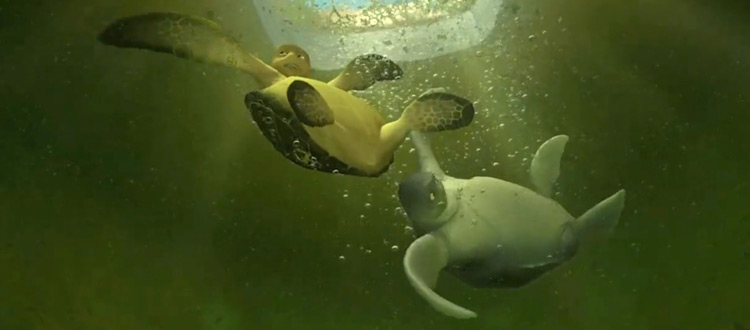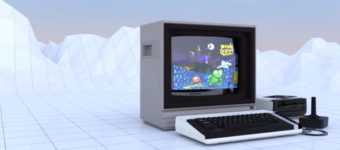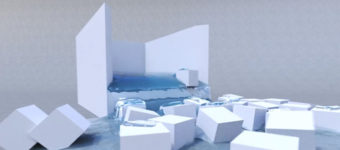
Free RealFlow Tutorials For 3D & VFX Fluid Simulations
RealFlow is a powerful VFX program for creating realistic liquid simulations for 3D & CG projects.
It has been used on plenty of blockbuster films like Avengers and X-Men. The software is flexible enough for small and large water environments with GPU acceleration for faster iteration. It also comes with Python support which makes custom scripting a lot easier.
RealFlow ships with a standalone installation(with connectivity plug-ins) or as a dedicated plug-in for many 3D applications like Cinema 4D and Maya.
If you wanna dive into the world of RealFlow these tutorials offer plenty to get started. You’ll explore how to set-up both versions of RealFlow starting from modifying emitters and learning the interface, then troubleshooting collision, art directing daemons and meshing particles(plus a whole lot more!)
RealFlow For C4D: The Basics
In this beginner RF + Cinema 4D tutorial, Sam from Digital Meat gives an overview of what makes up a RealFlow scene tree and later explains emitters in detail.
Emitters are the building blocks of any simulation. Sam shows how you can determine the initial behaviour of liquid particles by changing the emitter type.
For instance, with a fill emitter type you can easily represent a swimming pool or some wine inside a bottle. Or with a spline emitter type you can control the water’s direction rather than just leaving it to the whim of gravity.
Sam is a frequent content creator, not only for Realflow, but for Cinema 4D in general. You can check out his YouTube channel for more awesome videos.
The Mesher
Particles simulation is responsible to all 3D liquid’s behaviour. However the meshing phase is what actually makes the particles look liquid.
So if you dive into this tutorial you’ll learn how to create a collision geometry, pour particles, and finally generate the mesh.
You’ll solve issues with escaping particles by modifying solver sub steps and you’ll optimize a scene by using a K-volume daemon.
If you are only interested in the meshing process you can jump ahead to 33 minutes in where parameters such as resolution, thinning, and relax are discussed to achieve ideal details.
The Magic Daemon
While RealFlow is easily capable of producing realistic simulations, it’s the daemons that make it far more interesting.
Daemons are simply forces that affect particles. For instance, with the gravity daemon you can add gravity at the click of a button. Or you can blow particles in a specific direction using the wind daemon.
The Magic daemon creates a swarming behaviour by attracting particles to a specified object.
Yes, it is not physically correct. But this makes the movement quite appealing.
Imagine casting a spell where you trapped your enemy in a water orb. This tutorial deconstructs the various parameters such as magic mode and escape strength to control particle behaviour.
The Rigid Deformer
RealFlow for Cinema 4D comes with its own rigid deformer. This deformer is like Cinema 4D’s rigid body tag. They only differ from their liquid interaction.
Rigid body tag can only affect liquid simulation. However, rigid deformer can affect and be affected by the liquid simulation
These features come in handy when you want to wash away objects during floods or have objects float across a vast ocean.
In this introductory tutorial you’ll learn how to set-up a rigid deformer by adjusting the density and skinner parameters, among other factors. You’ll also learn how to integrate the wind daemon for an interesting water flow.
The Granular Solver
After establishing a reliable liquid solver, RealFlow introduced a granular solver in 2017 that’s responsible for creating sand and snow simulation.
This tutorial starts off describing how to troubleshoot if the simulation doesn’t work if the creation order of colliders and emitters are mixed up. It’s a valuable piece of knowledge for anyone working in this area for the first time.
Making a granular simulation can be done by switching the solver type to Granular. Default value is Position-Based Dynamics(PDB). You’ll get a slew of parameters dedicated to the solver once you switch over.
And from this video you’ll learn how to combine settings such as increasing friction and static friction to achieve clumping behavior resembling wet sand.
While projects requiring sand are not super common, at least you’ll know where to turn to if this comes up!
Splash in C4D
With this handy video guide Darkins begins by modelling a heart geometry and continues to make a RealFlow set-up inside Cinema 4D.
In this demonstration you’ll learn how Cinema 4D’s native rigid body system works well with RealFlow’s collider tag.
The highlight of this tutorial is the crown daemon, which allows you to specify the shape of any splash you create.
It comes with an intuitive spline interface that can be tweaked with normal bezier handles. The tutorial finishes with texturing and meshing for presentation.
How To Create Foam
With this standalone tutorial you can confidently study a close-up of soda poured down on a bottle.
Not an easy feat to achieve as this includes two interactive water systems.
The video begins by illustrating a common problem of fast simulation. You’ll learn to fix it using continuous collision detection and decreasing collision cell size.
This demo is packed with professional production tips such as manipulating parameters not by keyframes, but expressions. Or using two emitters in an otherwise one emitter set-up.
The key effect here is using the filter daemon which let you swap different water systems upon meeting a predefined condition, in this case vorticity.
For this to work seamlessly the two systems must have the same resolution and solve type.
Filling A Glass
Easily the most interesting feature in RealFlow is how you can control a liquid simulation using a spline path.
Think of juice commercials on TV where a liquid stream circles around a bottle and eventually settles down inside a container. It certainly looks complex but thankfully it is easy to set-up once you know what you’re doing.
This video covers blocking the path in 3ds Max and uses that starting point to move into RealFlow.
You’ll learn several production tips such as avoiding intersection of Dspline radius points, using drag, and working with the noise daemon to achieve a natural flow.
Creating Lava
This demonstration shows you how to create a lava simulation in two methods: using native Maya tools and using standalone RealFlow.
The Maya version uses nParticles being affected by gravity with the render types set to blobby surface.
The standalone part simply uses the native emitter with higher viscosity.
Both set-ups are textured in Maya using ramp mixed with two cloud nodes. With the integration of Arnold + Maya you’ll probably pass on using the Blinn Shader, but many of the explained node texture set-ups can still be applicable.
Segmented Ocean
RealFlow comes with three main liquid solver systems: Standard(the legacy simulation), Dyverso(small-scale simulation) and Hybrido(large-scale simulation).
In this tutorial you’ll learn how to use Hybrido interacting with a yacht in an ocean.
The tricky part of this tutorial is the set-up, which includes a moving emitter and k-volume daemon rather than one large Hybrido tank.
You’ll also texture and render the simulation all inside RealFlow using the built-in Maxwell renderer which is quite a task all on its own.
Realistic Chocolate Strawberry
In this three-part series you’ll recreate flowing chocolate on top of a strawberry.
Part one and part two deal with modelling and shading the strawberry which uses bend deformer and mograph object cloner, among some other handy tools.
In part three you’ll make a simulation in the standalone RealFlow with an emitter using a high viscosity.
The tutorial ends with a roundtrip to Cinema4D using the connectivity plug-in.
Absolutely a must-watch series if you wanna delve into RealFlow and pick up some practical 3D skills.
Liquid Logo Reveal
Here’s something pretty basic but also incredible valuable: a solid workflow for creating logo animations.
You’ll start off exporting vectors from Illustrator with the export preset set to Illustrator 8. This will help Cinema 4D translate vectors to splines accurately.
Next you’ll create various colliders and setup several daemons in preparation for the simulation.
You’ll also get shader tips such as using Arnold’s curvature node giving the simulation a dynamic look. Lastly you’ll build a quick camera cut set-up using the stage object.
And let me say the final result looks absolutely incredible!
Champagne Bottle Pop
This intermediate-level tutorial by TutsPlus shows you how to simulate a champagne bottle pop with the help of Maya for modelling.
The author shows two methods, both are worth studying.
The first is accurate but slow. The second includes faking a set-up but allows for faster iteration.
You’ll learn several modelling tricks when simulating an object inside a container such as having only the bottle interior used for calculation.
Later you’ll dive into more higher-level topics like how to direct & animate several parameters over time, such as adjusting the cork’s mass once the champagne releases.
Other professional tricks include a sheeter daemon for a more appealing splash and using two gravity daemons with the help of the exclusive linking feature.
RealFlow + Element 3D
Last but not least we come to a more advanced tutorial.
Here you’ll learn how to use several 3D programs to work with the standalone RealFlow in a production setting.
In the first part, creator Eric Young shows how to achieve a water-bending effect with the use of Fuse for creating characters. This leads into using Mixamo for rigging and using the C4D connectivity plug-in for seamless import and export of RealFlow data.
Another key tip is using a moving object(in this case a glove) to act as an emitter. Eric advises to enable the stream parameter to avoid blocky emissions.
Then in the second part you’ll learn how to flood a corridor and import the simulation into After Effects using Videocopilot’s Element3D. You’ll also cover setting up post processing effects such as depth of field and motion blur.
Definitely one of the more detailed tutorials here but also well worth learning, especially if you’re interested in After Effects or Element3D for project work.












